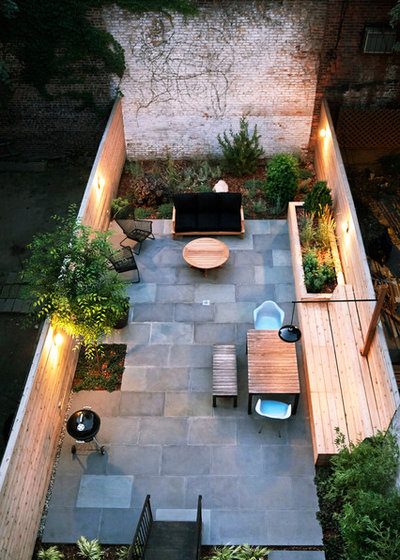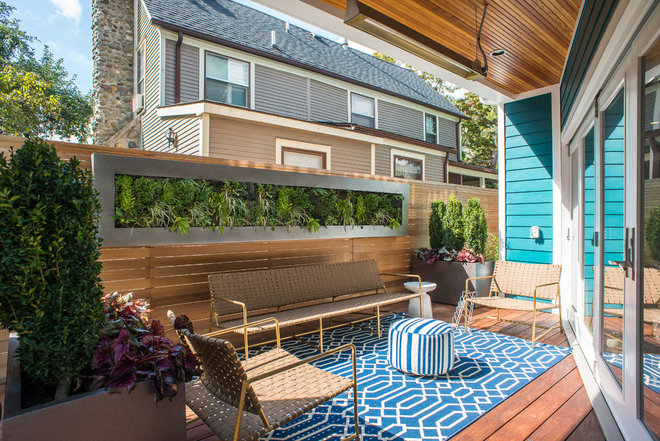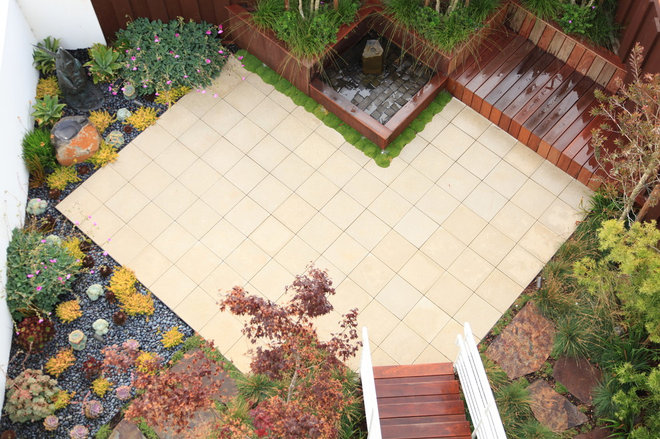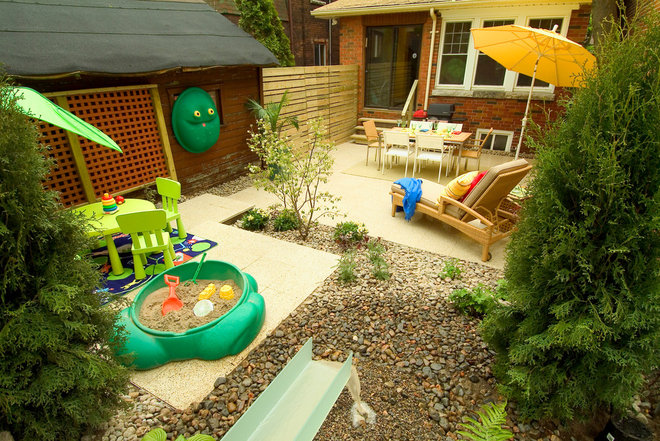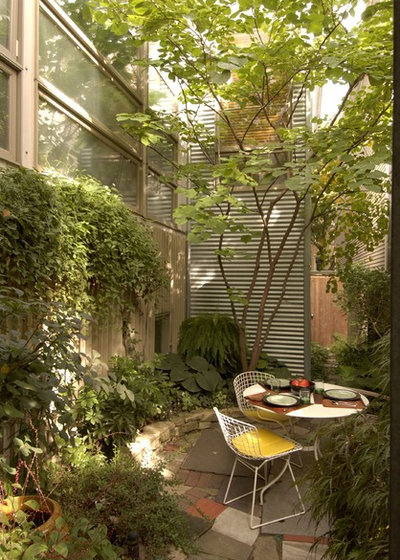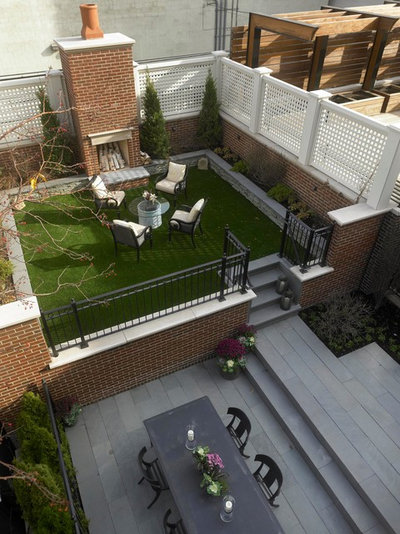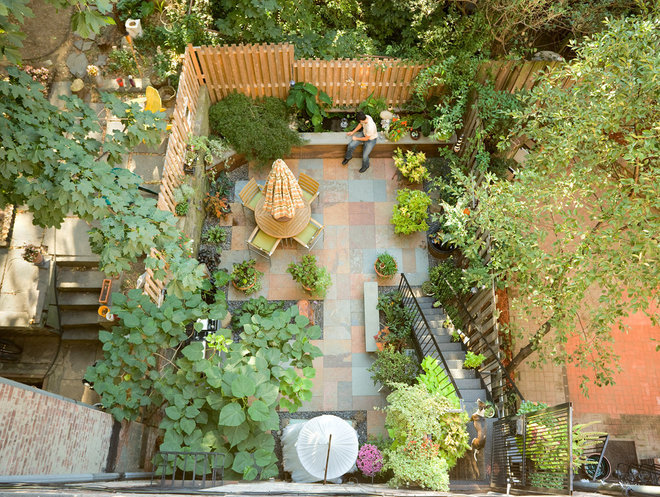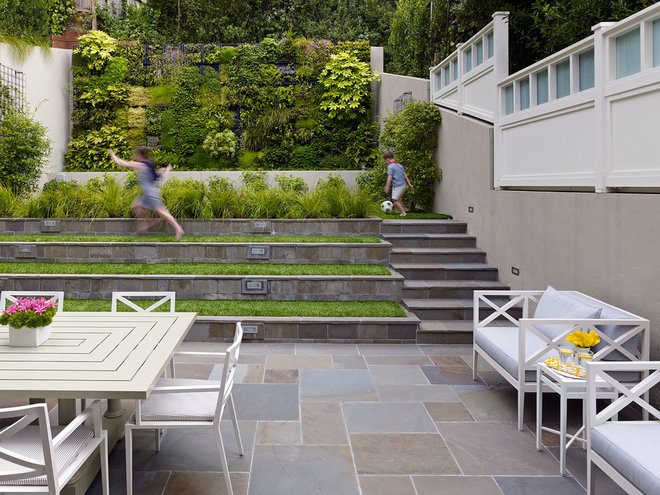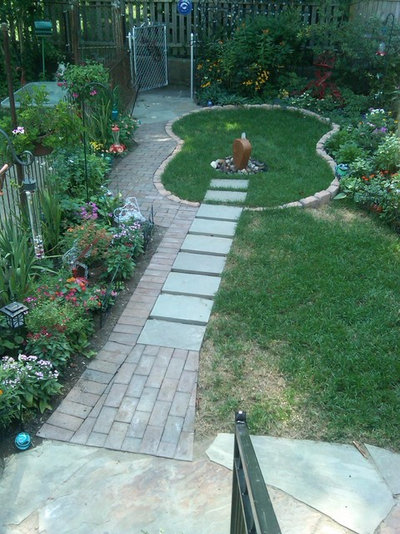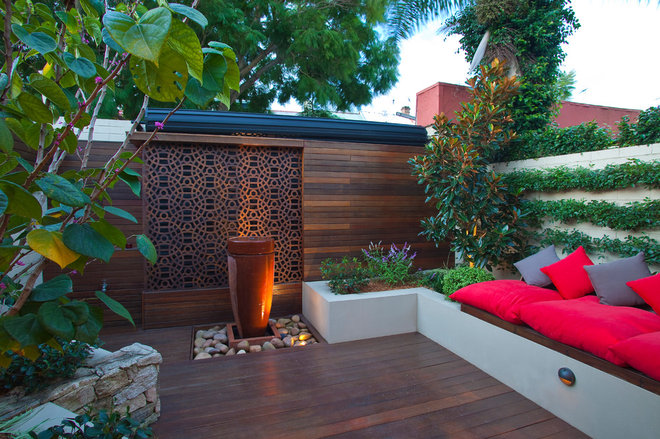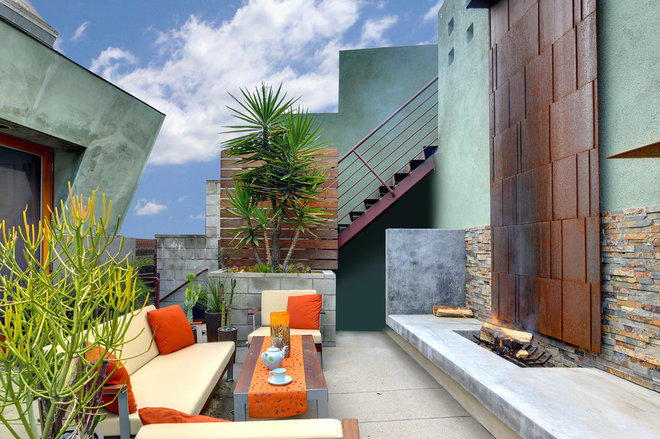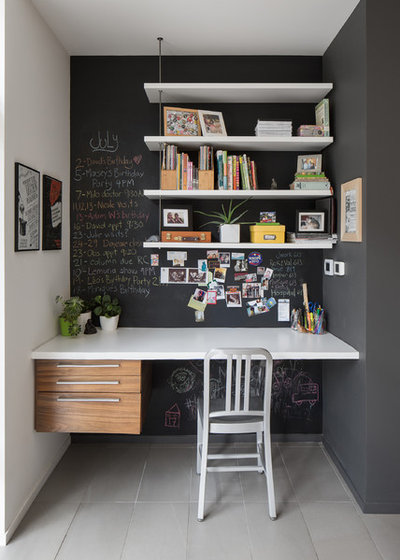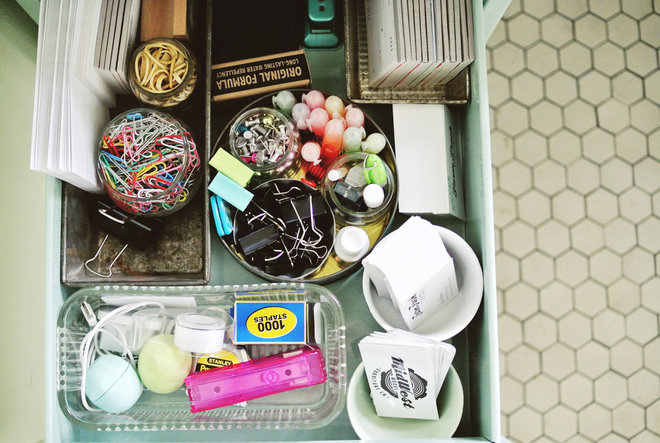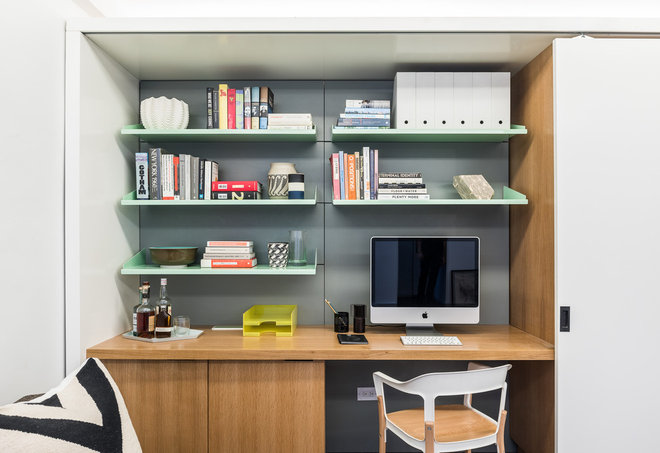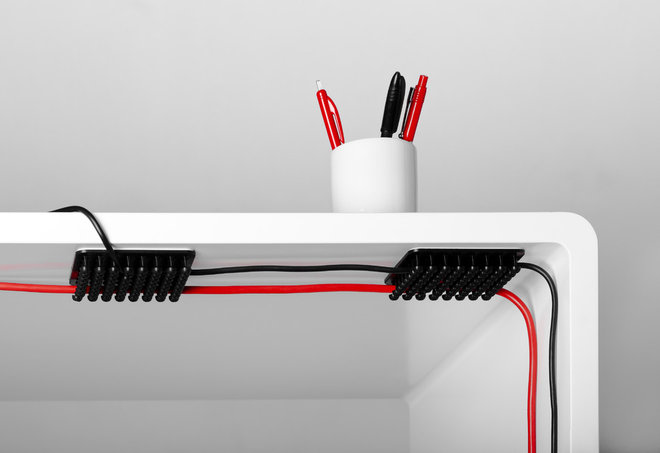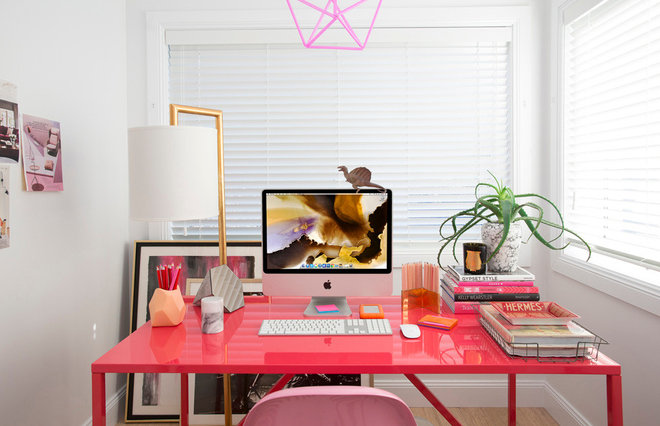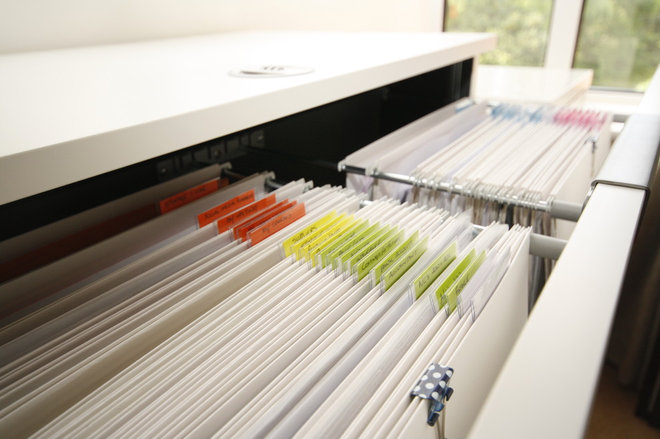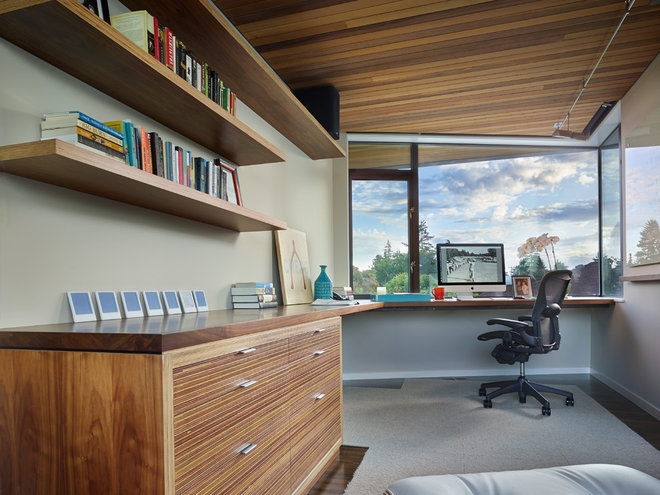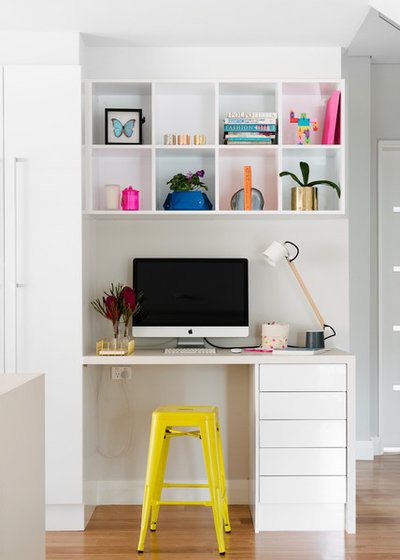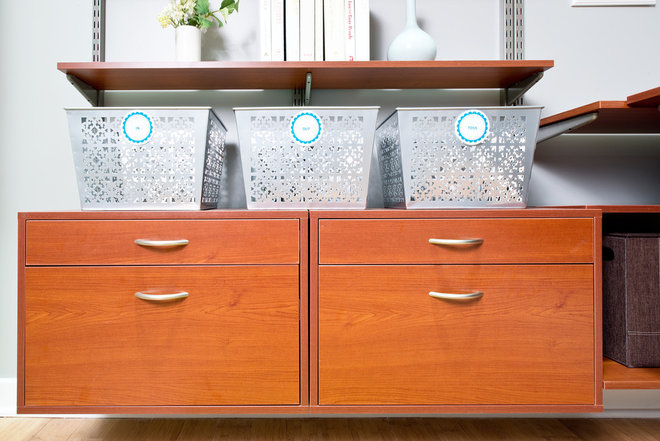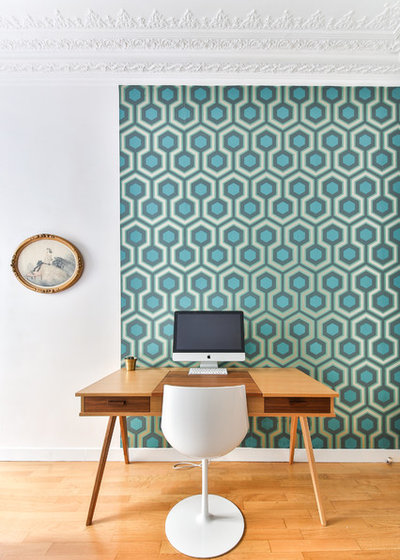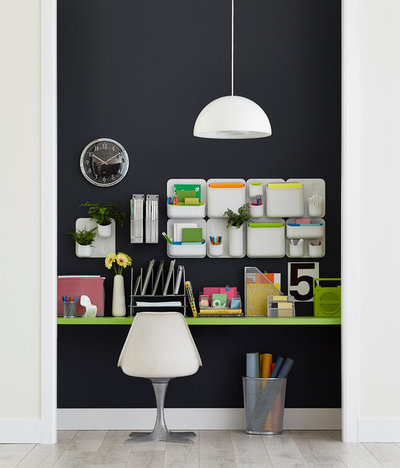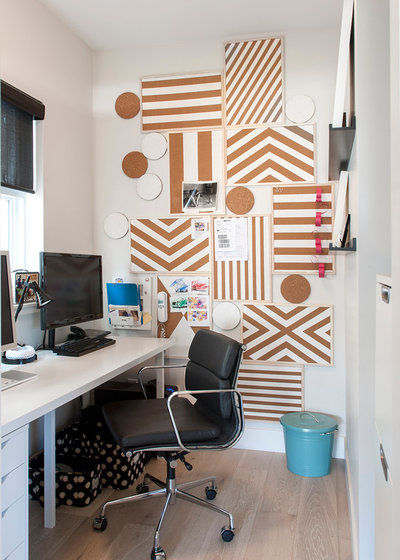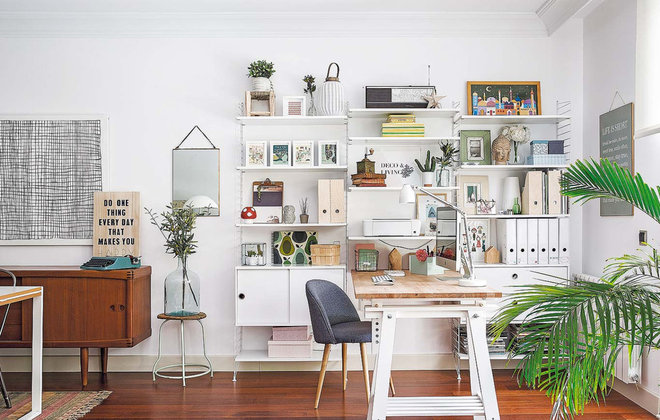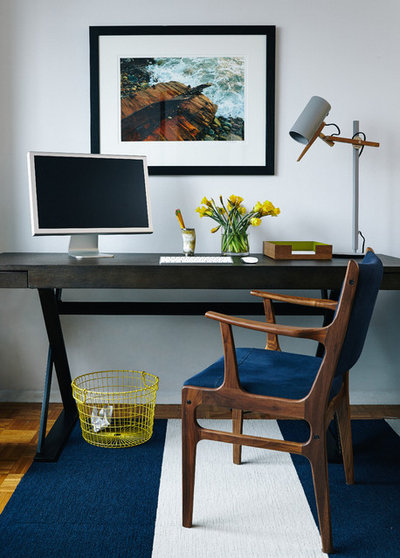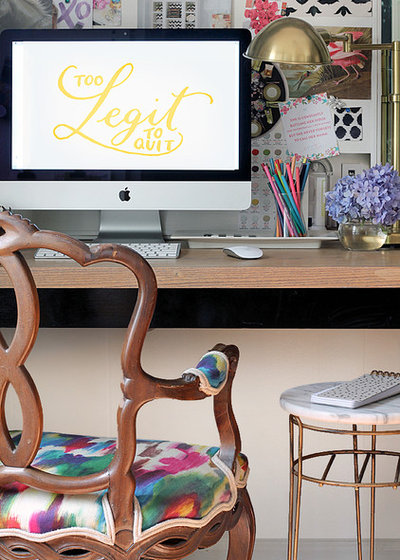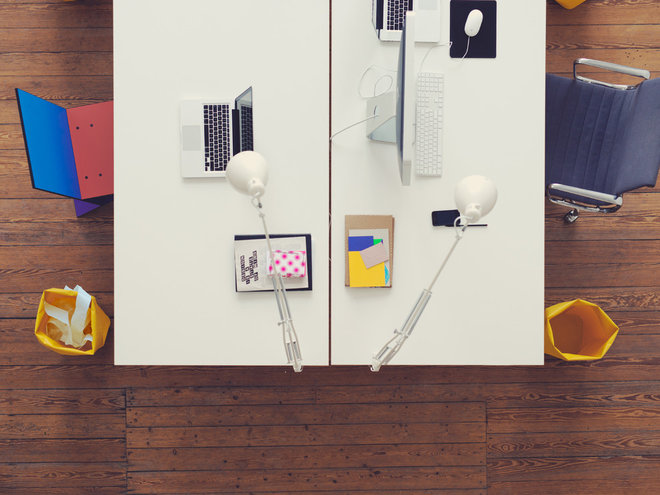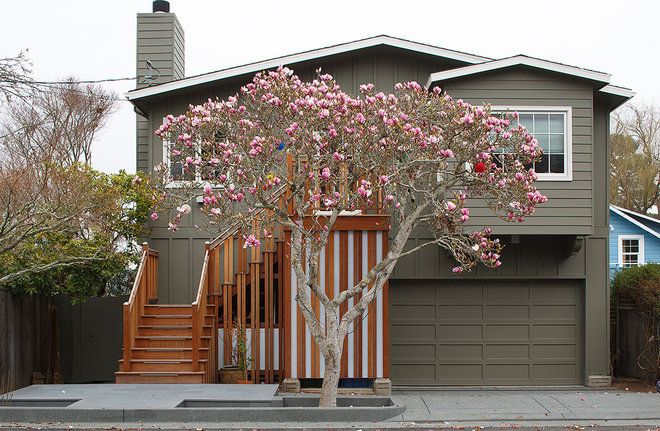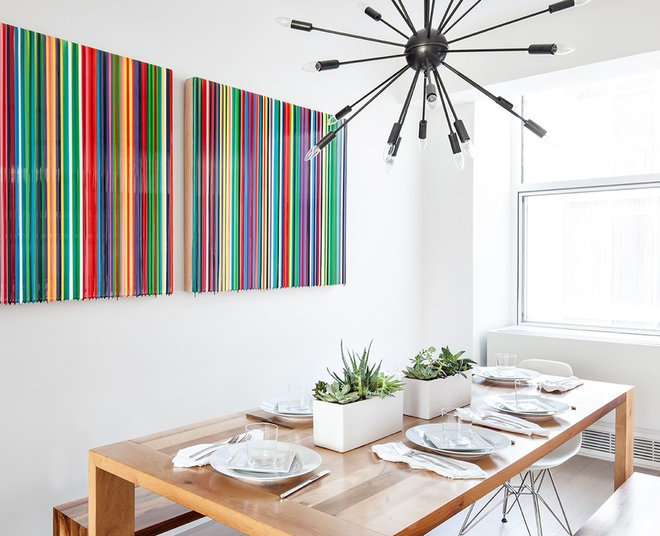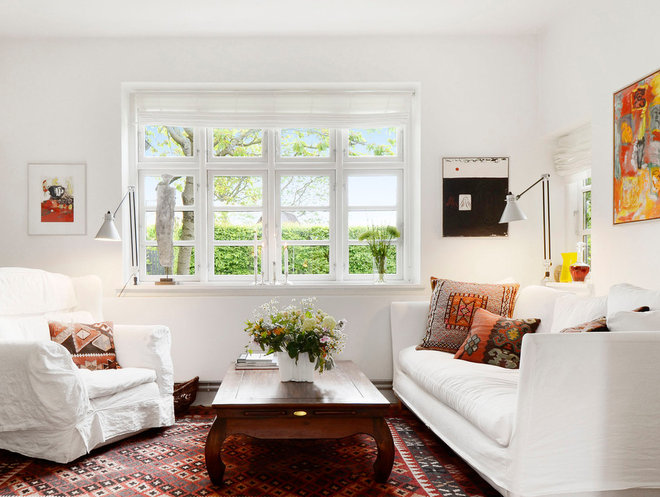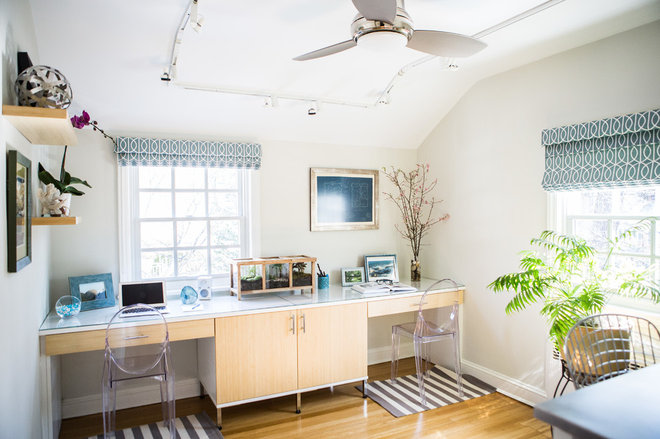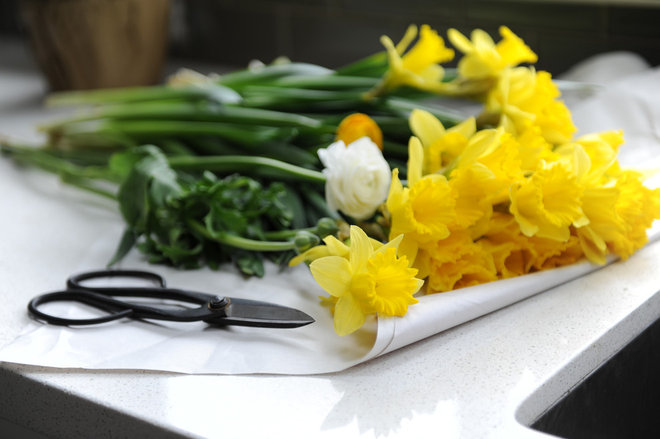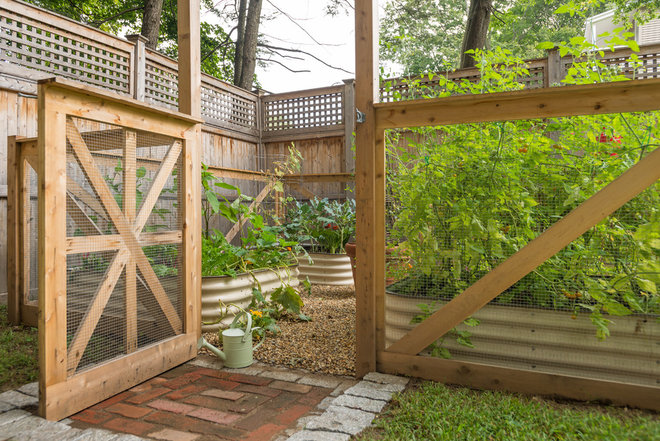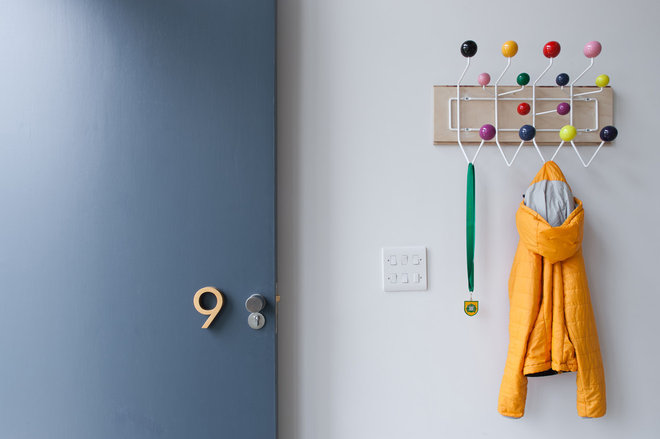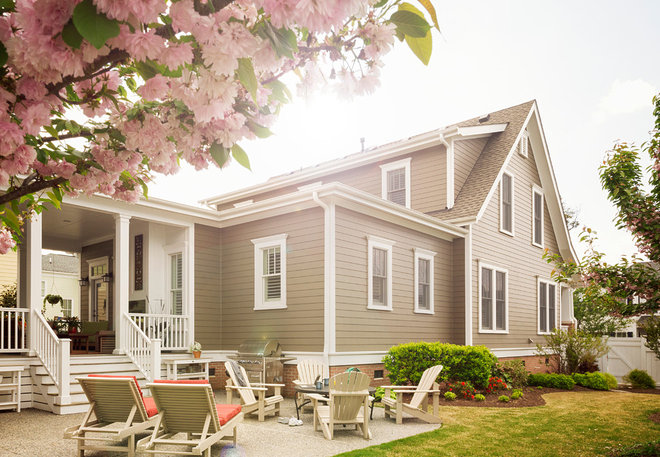1. Break it into multiple rooms or zones. Create multiple functions by strategically using built-ins and arranging furniture to establish different “rooms” for lounging, dining, mingling and cooking. This backyard space in Brooklyn, New York, has all four zones.
2. Implement a smart lighting design. This space also has a multifaceted lighting scheme. Sconces serve multiple purposes of task lighting by the grill, landscaping lighting by the plantings and overall ambient lighting. Meanwhile, an arm pendant hangs over the dining area.
3. Extend an indoor space. Architect Carson Arthur likes to ask his clients which indoor room they feel is too small, then establish more of that space in the backyard. “Is your kitchen too small? Do you need a bigger family room? Why not do that outside?” he says. “With the development of outdoor technology, anything inside can now be done outside.”
Here an outdoor rug helps establish an extra living space on a small deck in Detroit.
4. Complement your interiors. Use the same colors and style that you’ve already established inside your home for your backyard to make it feel more like its own living room. “Stylistically, you want to pick up on colors and textures that tie the two spaces together,” says Amber Freda, a landscape architect in New York. “Make it more than just a couple of chairs and a dining table. A plain dining table with wooden chairs won’t entice you to use it very much, but really comfortable lounge seating will.”
5. Play with the angles. If you’ve got a small square spot to deal with, San Francisco landscape architect Rich Radford suggests turning paving in a lateral direction to your property line to create more hardscape space. For the 25-foot by 30-foot backyard seen here, he shifted the paving 45 degrees to get more surface area.
6. Pay attention to scale. If you’ve got a small backyard, the last thing you want to do is cram in a 10-person dining table. Instead, consider built-ins or extendable tables. Likewise, you won’t want to plant a tree that’s going to grow to 100 feet tall and completely overtake your yard. Here Radford smartly worked in small, native plants and grasses to keep an open feel.
7. Use one surface material. If you have multifunctional areas, use one material to unify the spaces. “Small spaces need that cohesion,” says Arthur, who designed this 17-foot by 25-foot space for a family with small children. A separate play zone keeps the kids close by while the parents are entertaining, and the continuous paving ties it all together.
Radford goes even further, suggesting using the same material that’s found elsewhere on the property. For one of his backyard projects, he used the same paving material as in the front entryway. “It created a unified space that made it seem bigger,” he says.
8. Avoid clutter. The more elements your yard has, the tighter it will feel. Instead, try to use built-in seating, incorporate clean lines, avoid bulky furniture and keep plantings under control. “If there’s one thing that will get out of control and take over a small space, it’s a plant that’s too happy,” Arthur says.
Freda agrees: “Avoid the hodgepodge effect,” she says. “Instead of doing 20 little pots, do five big pots for a more clean look with bigger impact. Pick only two or three styles of planters, two or three colors — it makes it feel less accidental, chaotic and overwhelming.”
To get the most out of this 25-foot by 20-foot Toronto backyard, architect Erik Calhouncreated raised decks over a large tree’s very high roots. He skipped big plants in favor of creating more recreation space. “Hedges or bushes would stick out 3 feet, and you wouldn’t be able to move anymore,” he says.
9. Enclose the space. This may sound counterintuitive to making a small space feel larger, but it’s something that might work for your space. “When you enclose a small space even more, you play up its coziness and make it intimate, something that’s hard to achieve with large spaces,” Arthur says. “This also takes it to the next level of feeling like an outdoor room.”
Pergolas are great for creating an intimate feel, but you can get the same effect with plantings. Architect Gary Beyerl’s backyard (shown here) is 10 feet by 20 feet. Because he has apartment units attached to his home, he wanted to do something that would afford him privacy. He used vertical plantings like humongous trumpet vines and a redbud tree to create an envelope of plant material. “By extending the plant zone up the vertical surfaces of an urban space, you can make a lot of visual greenery work to your advantage,” he says. “I’ve got a verdant environment even though it’s tiny.”
12. Keep maintenance to a minimum. One of the great things about small spaces is that they’re easy to clean. So don’t muck with this advantage! Arthur suggests using more planters rather than ground-cover soil. “Otherwise mud inevitably ends up all over your small patio space,” he says. “Containers give you the warmth of planters but are more manageable.”
Native succulents and grasses minimize water use, but you should also consider artificial turf. “It maintains color and character better than a natural yard,” Beyerl says. San Francisco designer Martha Angus used artificial turf in the backyard space shown here; she also recommends faux boxwood. “A boxwood hedge might be 18 to 24 inches deep,” she says. “That takes up a lot of space. Faux boxwood comes in squares that are 3 inches deep that you can staple to a fence. They’re absolutely gorgeous, don’t require water and take up no room whatsoever.”
More ideas for using artificial turf
13. Terrace a sloping yard. Angus’ project here highlights another good method of increasing a tight backyard space. If you’ve got a severely sloping yard, consider terracing. Granted, terracing can be incredibly expensive, says Angus, because an extensive substructure must be created to support the terraces, but, as you can see, it provides more flat surface for activities.
15. Create a focal point. As with adding character, a focal point takes attention off the size of the space. Arthur likes to use water features. He’s even added a single large planter right in the center of a small backyard to draw the eye into the center and push the walls away. “It’s a trick of the eye,” he says.
Art and sculpture are good candidates, too. “A single sculpture with uplighting can be phenomenal,” Angus says.
16. Get design help when you need it. It might not seem like it, but small spaces are often more difficult to design than large ones. An expert will be trained to deal with your needs and challenges.
Calhoun suggests going with an architect who can best come up with the right approach for your unique space. Is there a lot of sun? Rain? Wind? “You want someone who has a whole philosophy,” he says. A landscaper who specializes in country-style gardens could come in and do the usual, and it might be lovely, he says, “but it won’t be as satisfying as something that reflects what’s going on with the building. Call an architect instead of calling the nursery.”
Beyerl suggests bringing in a team of pros to get the job done. “Room making is an architect’s profession,” he says. “Then a carpenter can complete all the design finesse. And a landscape designer will understand how the plantings will work over time.”
